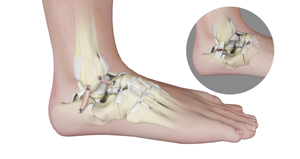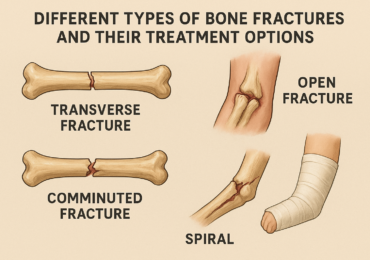Lorem ipsum dolor sit amet, consectetur adipiscing elit. Ut elit tellus, luctus nec ullamcorper mattis, pulvinar dapibus leo.
Ankle pain is often dismissed as a minor issue caused by overuse, twisting, or sprains. However, persistent discomfort in the ankle joint could be an early sign of ankle arthritis—a condition that can significantly impact mobility and quality of life if left untreated. Understanding the warning signs and exploring modern treatment options is key to managing this condition effectively.
What is Ankle Arthritis?
Ankle arthritis is a condition where the cartilage that cushions the ankle joint wears down over time. This leads to pain, swelling, stiffness, and difficulty in movement. While less common than arthritis in the knee or hip, ankle arthritis can be just as debilitating.
Early Warning Signs You Shouldn’t Ignore:
1. Persistent Ankle Pain
If you feel ongoing pain in your ankle—especially after walking, standing, or mild activity—it may be more than just a sprain. Arthritis pain often worsens with activity and improves with rest.
2. Stiffness in the Morning or After Rest
One of the most common early symptoms is stiffness, particularly when you wake up or after sitting for long periods. It may feel like your ankle joint is “locked.”
3. Swelling Around the Ankle
Frequent swelling or tenderness around the ankle joint is a red flag. This inflammation is your body’s response to joint damage.
4. Reduced Range of Motion
If moving your ankle feels restricted or difficult, arthritis could be the cause. You may notice trouble flexing or rotating your foot as easily as before.
5. Grinding or Clicking Sensations
A “crunching,” “grinding,” or “clicking” feeling inside the ankle may occur when the cartilage wears down, causing bones to rub directly against each other.
6. Difficulty Walking or Balance Issues
If you find yourself limping, avoiding putting weight on your ankle, or losing balance frequently, these could be signs of arthritis affecting joint stability.
Modern Treatments for Ankle Arthritis
Ankle arthritis is a painful condition that can affect mobility, independence, and quality of life. It occurs when the protective cartilage of the ankle joint wears away, causing pain, stiffness, and swelling. While it can be caused by aging, injuries, or autoimmune diseases, the good news is that modern treatments offer many options to relieve symptoms, improve function, and restore movement.
Non-Surgical Treatments
For many patients, ankle arthritis can first be managed without surgery. These treatments focus on reducing pain, protecting the joint, and slowing progression.
1. Medications
Anti-inflammatory drugs (NSAIDs) and pain relievers can ease discomfort and swelling. In some cases, advanced medications are prescribed to target inflammation.
2. Physical Therapy
Customized exercises strengthen ankle muscles, improve flexibility, and enhance balance. Regular physiotherapy can significantly reduce stiffness and pain.
3. Lifestyle Changes
Maintaining a healthy weight reduces stress on ankle joints. Switching to low-impact activities such as swimming or cycling instead of running can also help.
4. Braces & Orthotics
Ankle braces or specialized footwear provide support, reduce strain, and make daily activities easier.
5. Injections
>Corticosteroid injections: Provide temporary pain relief by reducing inflammation.
>Hyaluronic acid injections: Act as lubricants to improve joint movement.
>Regenerative therapies (PRP, stem cell): Emerging treatments that may help repair tissue.
Surgical Treatments
When non-surgical care isn’t enough, advanced surgical techniques can restore function and relieve severe pain.
1. Arthroscopy
A minimally invasive surgery where tiny instruments are used to clean out damaged tissue, smooth cartilage, or remove bone spurs.
2. Ankle Fusion (Arthrodesis)
In this procedure, the ankle bones are fused together to stop painful movement. While mobility is reduced, it provides lasting pain relief.
3. Total Ankle Replacement (Arthroplasty)
One of the most modern solutions—damaged parts of the ankle joint are replaced with an artificial implant. Unlike fusion, this preserves joint motion and allows patients to walk more naturally.
Conclusion
Ankle arthritis doesn’t have to hold you back. By recognizing the early warning signs and seeking timely medical advice, you can explore modern treatment options that reduce pain, improve mobility, and restore confidence in your daily activities. Remember—early care today can prevent major complications tomorrow.
For expert diagnosis and tailored care plans, consult Dr. Aditya Orthocare, your trusted foot and ankle specialist in Hyderabad.
Lorem ipsum dolor sit amet, consectetur adipiscing elit. Ut elit tellus, luctus nec ullamcorper mattis, pulvinar dapibus leo.



